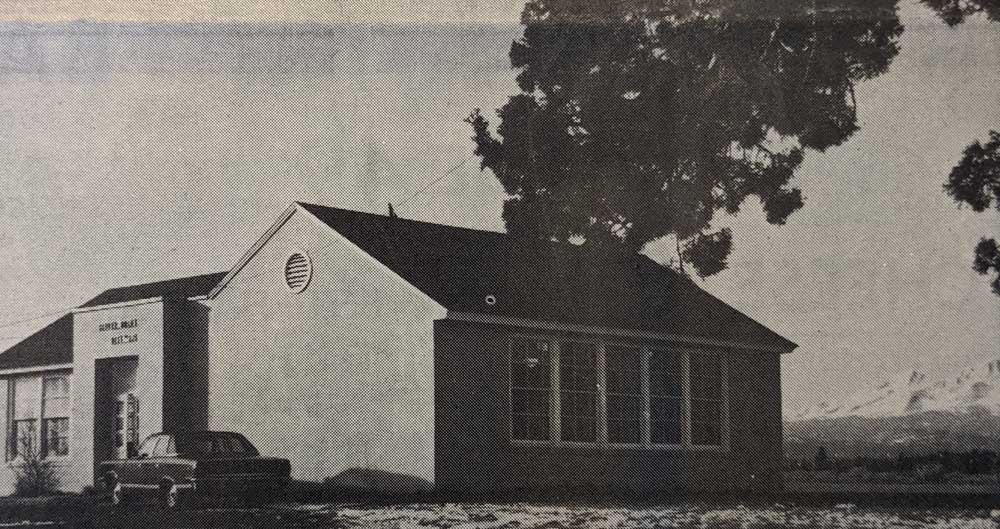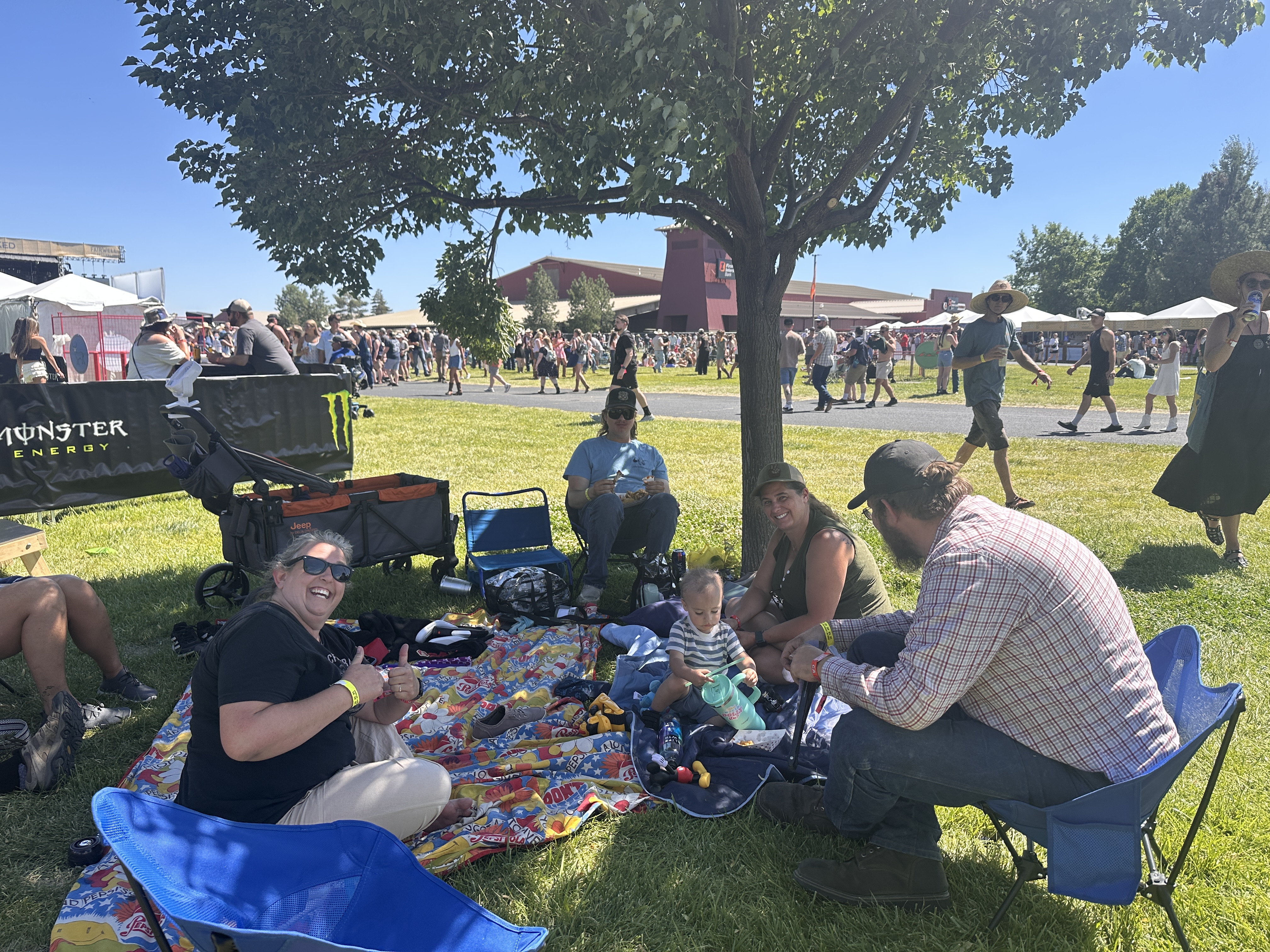Flashback: Cloverdale School, a one-room schoolhouse, on the chopping block in 1970
Published 1:00 am Wednesday, December 16, 2020

- Fate of the Cloverdale School, one of the few remaining operational one-room schools in Central Oregon, will be considered by an ad hoc committee to be appointed by the Redmond School Board at a special meeting for Dec. 21, 1970, at the district office.
100 years ago
Trending
Dec. 16, 1920 — Tourist Dies in Snow with Stalled Car
Frank Cherrytree, aged about 34 years, of Browley, Cal., froze to death beside his stalled automobile about 16 miles below Crescent some time early this week, according to word received at the forestry office at Bend.
Without provisions, bedding or snowshoes and wearing summer clothing, Cherrytree and E.C. Sweo of Spokane passed through Crescent a week ago.
Trending
When their light car became stalled, Sweo and Cherrytree, believing from their road map that there was a town at Beaver Marsh, walked the ten miles to that place and returned to their car after finding no habitation.
Both were weak from starvation and Cherrytree remained at the car with an axe to keep a fire going and await the return of Sweo who elected to walk back to Crescent. Their fruitless trip to Beaver Marsh and return, a walk of twenty miles, had taken two days but in his weakened condition, Sweo was able to make but five miles a day and arrived there Monday after being five days without food.
A searching party found Cherrytree a quarter mile from his automobile. Apparently unable to keep awake to feed his fire, he had started toward Crescent.
The thermometer reached twenty below zero at LaPine Monday night.
75 years ago
Dec. 20, 1945 — Redmond Grades To Remain Open; Epidemic Unlikely
Occurrence of one case of infantile paralysis at Culver has resulted in the closure of Culver grade school, it was announced here this week. Inasmuch as there have been no known cases of the disease in Redmond and on the advice of state health authorities, Redmond grade school will remain open, but no visitors will be allowed, announces Principal Everett Daugherty. Culver schools are scheduled to reopen Monday.
“This is not the time of year when epidemics of poliomyelitis occur, and no epidemic of the disease is anticipated,” says Dr. R. [unreadable].
50 years ago
Dec. 16, 1970 — Proposals to close Cloverdale, cut bus routes draws reaction
Proposals to study the feasibility of closing the Cloverdale School and shortening the bus routes in the Opal City, Lower Bridge and Cloverdale areas aroused spirited citizen participation at the Redmond School Board meeting Monday evening at Cloverdale School.
Superintendent Paul Eggleston, in asking the board to appoint a committee to study the Cloverdale School situation, cited lower cost figures for educating children in Redmond as opposed to Cloverdale and the availability of “a more varied educational experience,” with emphasis on proximity of specialists and a wider range of friends as basic argument for closing the school.
On the positive side for Cloverdale, he noted that the primary level children would have to commute further to attend Redmond schools, they would lose the warm friendly atmosphere of the one-room schoolhouse and the community may lose the building as a center of community activity.
Ray Clevenger of Terrebonne, one of several rural residents from outside the affected community to join Cloverdale citizens in an attempt to keep the school, was the only member appointed to the committee, with action on additional appointments delayed until a special board meeting, to be held at noon on Monday, Dec. 21, at the district office in Redmond.
Clevenger’s appointment came after he cited recent studies on multi-level teaching that have revealed that small children learn better as they relate to older children in the same classroom. Some 50 citizens converged on the little green schoolhouse despite falling snow and treacherous roads to attend the meeting that lasted beyond midnight. Although the closure of Cloverdale was half-way down a 22-point agenda, the plight of the hosting school came to the fore early in the evening when Sally Limbeck, secretary of the transportation subcommittee to the Citizens Advisory Committee, read a report recommending a minimum walking distance to school be set at one mile, that parents be responsible for getting their children to designated bus stops, that school patrols be established at Highway 20 in Tumalo and Highway 126 in Redmond, that 30 miles daily be eliminated from the Opal City bus route, that 16 miles be chopped from the Lower Bridge area, and that four miles be cut from the Cloverdale route.
Dick Hogan of Lower Bridge warned Cloverdale residents that they had better be sure they were assured bus transportation before their school was closed.
Marshall Clevenger of Terrebonne pointed out that when Lower Bridge had been ordered to consolidate, that the district had been promised bus transportation by the Terrebonne District Board, which was incorporating the Lower Bridge area, and later joined Redmond, and also by the county school superintendent.
Riled by the proposed transportation cuts in Opal City’s routes, that area’s Gene King declared that Opal City had chosen to go with the Redmond District instead of Madras because of promises by then Superintendent Hugh Hartman and other Redmond school officials that bus transportation would be provided. He pointed out that promises had been made during meetings with board representatives present.
After a couple board members explained that no school board could make promises binding upon a subsequent board, one woman in the audience pointed out that it didn’t matter what the board said, “because they won’t be here next year anyway.”
With Alfalfa residents worried that if Cloverdale were closed, their school would be next, that community’s Dale Pippitt contended that Dr. Eggleston had told people in Alfalfa that “one room school is the best thing we have going” at a meeting earlier this year in Alfalfa. Pippett also echoed the sentiment of other rural areas in stating that the Redmond District had been chosen based on promises by Hartman at the time of impending consolidation outweighed those made by Bend’s Superintendent R.E. Jewell.
Specifically, advocates for the retention of Cloverdale School noted that while consolidation promised better learning, it, in fact, served to place more children within each classroom; asked how many children Cloverdale would have to serve to be economically comparable to in-Redmond schools; hinted that some children that should be attending Cloverdale are actually attending Redmond schools; called for retention of the school at the expense of athletics; inquired if the addition of 11 more students would not necessitate an additional bus on the already overcrowded run; inferred that impressionable primary students should not be subjected to the bad influences of city environment, reminded the board of Hartman’s promise to keep Cloverdale open as long as possible, and asked procedures for petitioning to have the Cloverdale area taken out of the Redmond district and placed in the Sisters district.
Discussions on Cloverdale closed with inquiries from Mrs. Keith Cyrus as to the possibility of bringing Lower Bridge children to Cloverdale or hiring a teacher with less experience, and hence, lower salary, for the one-room school, and finally, with an offer to teach at the school at whatever salary necessary to make the operation economically feasible. Mrs. Cyrus has taught previously in Redmond.
25 years ago
Dec. 20, 1995 — Food agency relies on local sources
Your tax dollars may be at work, but they aren’t putting in overtime feeding Central Oregon. There’s been an 80 percent reduction in U.S. Department of Agriculture commodities, according to Naomi Jackson, the emergency food program coordinator.
Butter, flour and corn meal are all history. “We don’t get a lot of anything from the government,” she said. “What we do get isn’t great food, but we’re grateful for it and happy to have it.”
Is Redmond hungry? Yes. In the first nine months of the year, households receiving emergency food totaled 3.091. Individuals in those households numbered 9,827 — roughly a third of the tri-county area’s total.
Fortunately, Jackson said, the Agriculture Department isn’t the only source for emergency food boxes. Private and business donations keep fed the ever-swelling ranks of the hungry.
The problem is endless, Jackson said. “Unfortunately, it seems all rolled together,” she said. “If people pay the rent, they can’t buy food.”
Food that is donated in Redmond stays in the community.
Besides government cutbacks, shortfalls occur because of misconceptions, Jackson said. Those who assume that government will provide food for the hungry may not choose to give themselves.
Jackson said that the last agency campaign fell far short of the goal. However, the Redmond Post Office “saved our skin” with its December food drive.
“Some people think it’s like a grocery store. No one comes into an emergency food program and says, ‘I’ll take one of those and two of these and a packet of meat.’ Not at all,” she said.
The program, which distributes to outlets all over Central Oregon, including two sites in Redmond, this year has a walk-in freezer acquired with grants and community donations. Jackson said that it’s always hard to miss donations due to the lack of storage.
With the frozen foods in place, the next goal for the program is to raise funds for a cooler. But first, they’ll take food for those who need it. There are just a few shopping days until Christmas, but for food gifts, there is no deadline.
“We need donations, always,” Jackson said. “Hunger is year-round, not just during the holidays.”








